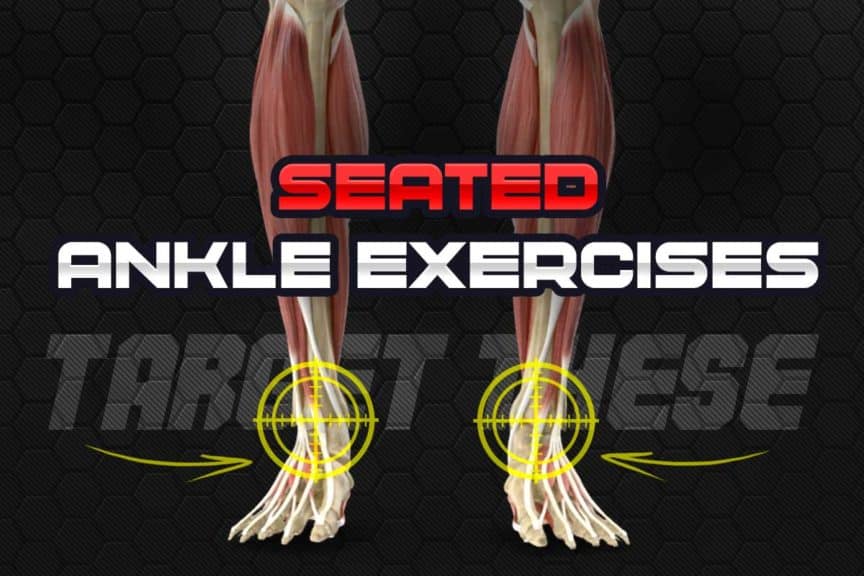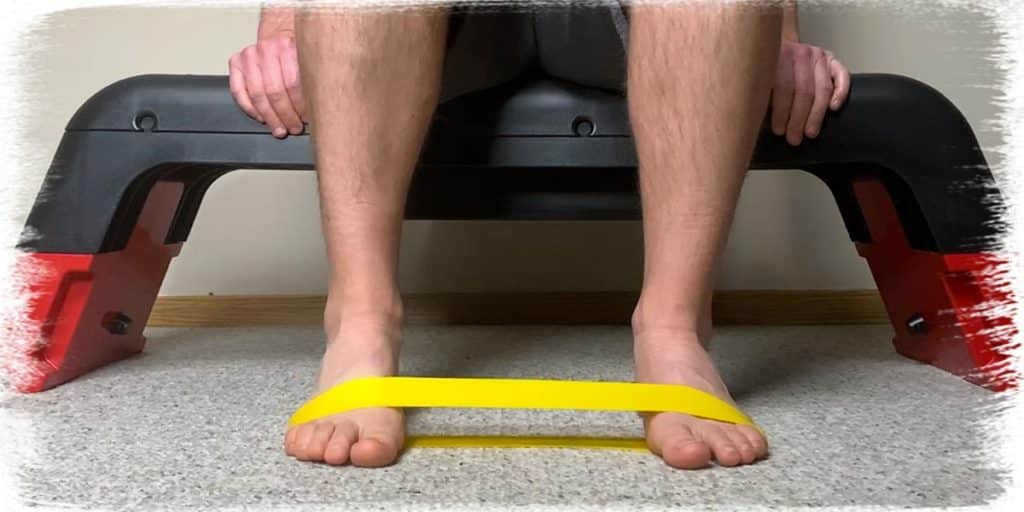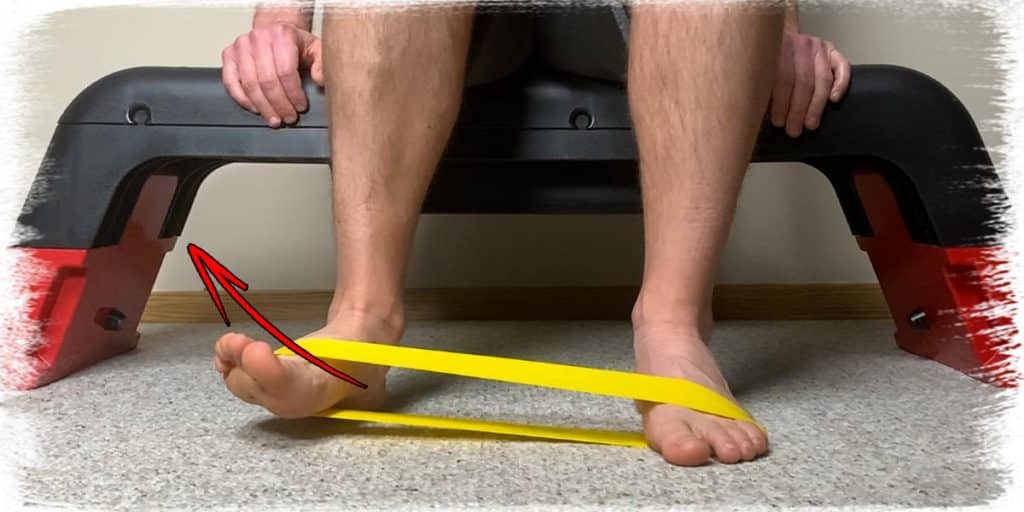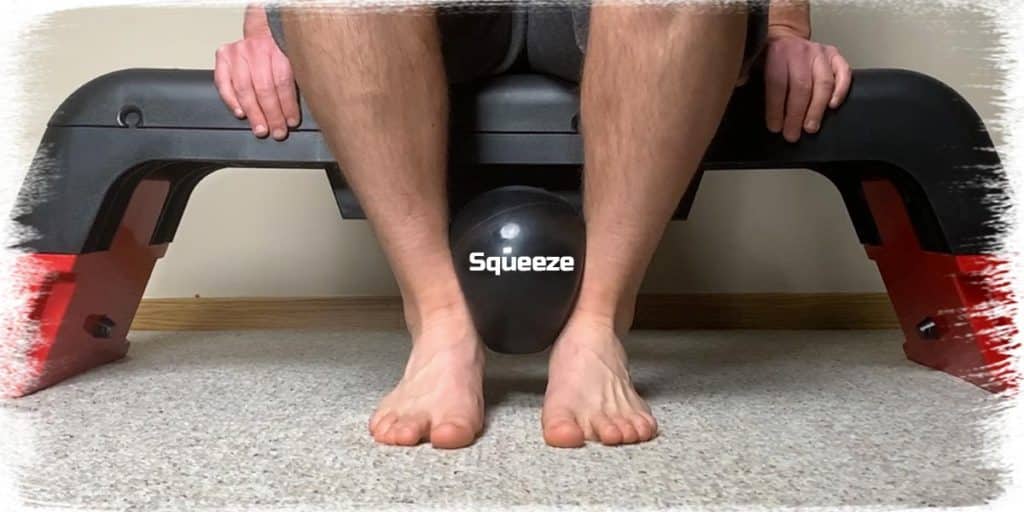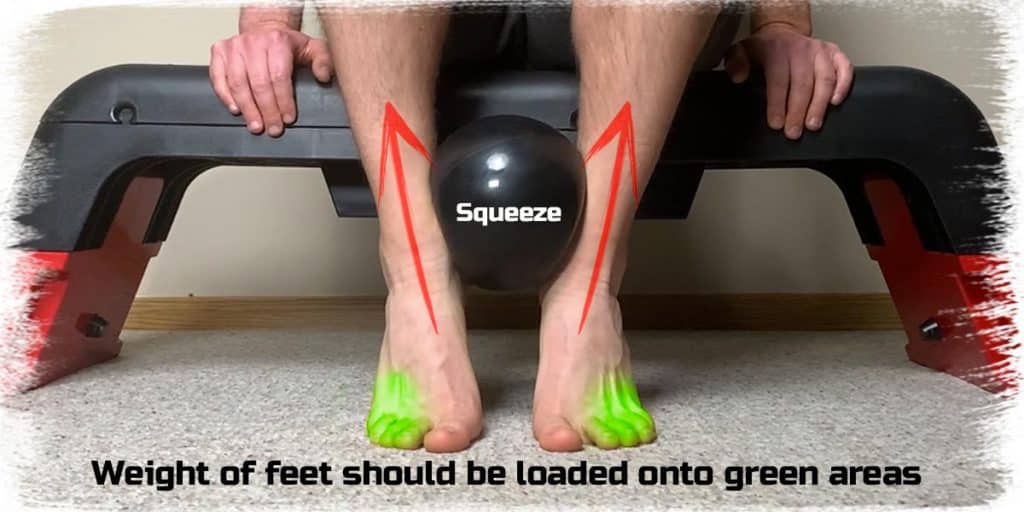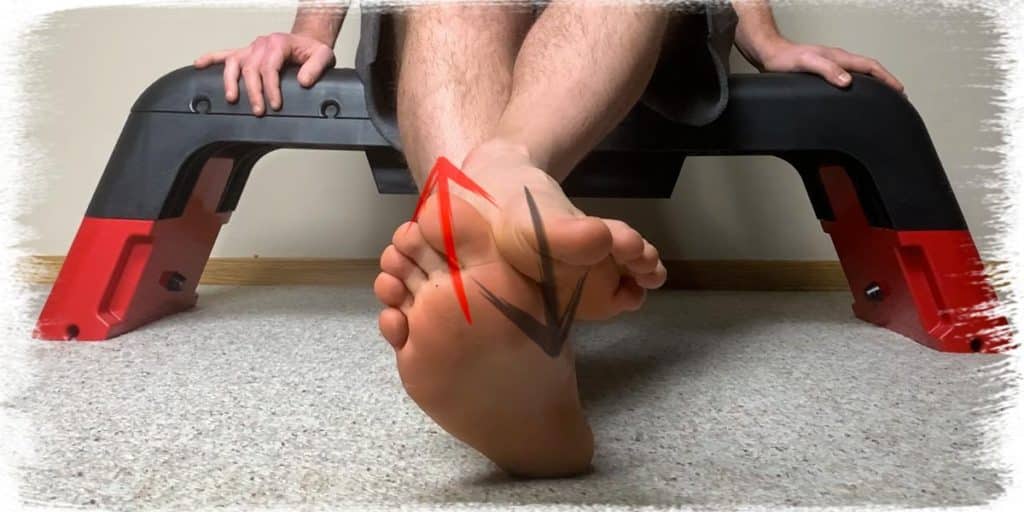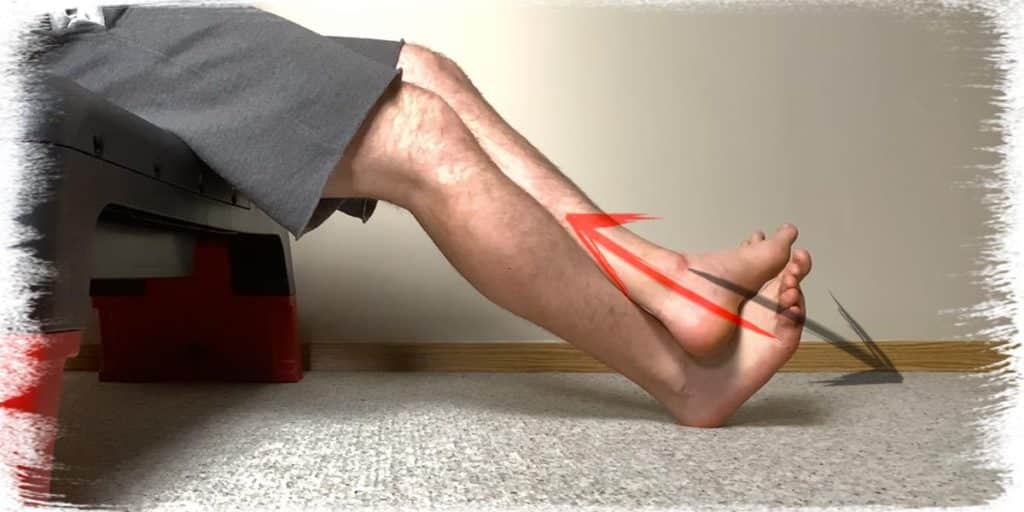The three exercises in this article will show you how to strengthen your ankles through its primary movements (dorsiflexion, plantarflexion, inversion and eversion) while sitting down. They are simple, effective and can be great for early-stage ankle rehab (injury recovery) or general strengthening and mobility purposes.
Strengthening your ankles while sitting down (such as at a desk) involves:
- Using a mini-band for resisted ankle eversion
- Using a soft ball for ankle inversion strengthening
- Using your opposite foot for resisted ankle dorsiflexion
Don’t worry if you’re not familiar with any of those above terms. I’ll break them all down in give you a detailed walk-through of each exercise within this article! So, keep reading if your want to know how to bulletproof your ankles while staying seated!
ARTICLE OVERVIEW (Quick Links)
Click/tap on the headlines below to instantly navigate to that section of the article!
Understanding the primary ankle movements
Exercise 1: Resisted eversion with mini-band
Exercise 2: Inversion strengthening with a ball
Exercise 3: Self-resisted dorsiflexion
Related article: Four Handy Exercises to Help Loosen Stiff Ankles in All Directions
Understanding the primary ankle movements
Generally speaking, your ankle can produce four general directions of movement. A basic understanding of each one can help make your strengthening exercises much more intuitive (and effective) by giving you knowledge of what the movement should look and feel like.
So, let’s briefly go over each one!
Ankle movement 1: Inversion
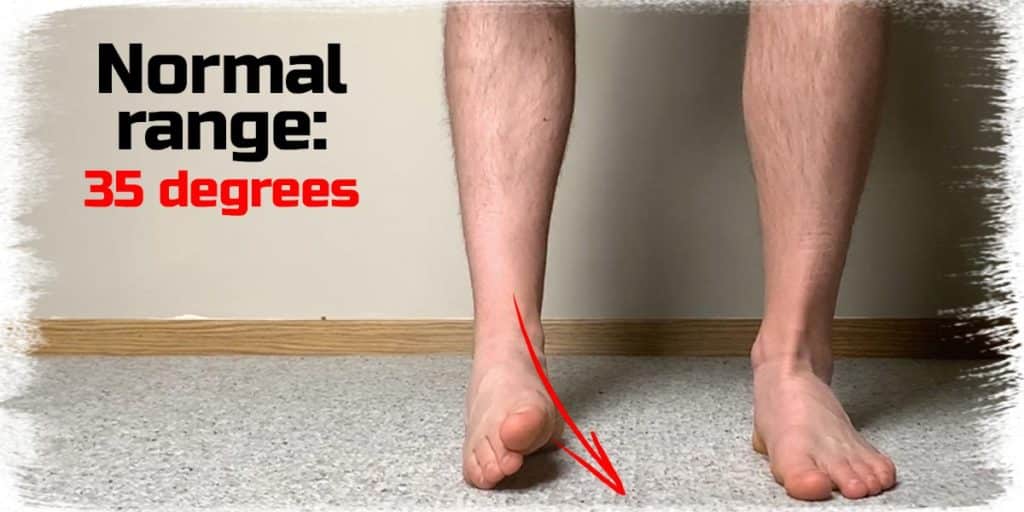
Inversion refers to the position your ankle moves when standing on the outside edge of your foot; your ankle scoops inwards so that the sole of your foot lifts upwards towards the midline of your body.
Fun fact: The most common ankle sprain is known as an inversion sprain, AKA “rolling ankle.” This refers to the ankle inverting or “rolling” beyond its normal, pain-free range.
Ankle movement 2: Eversion
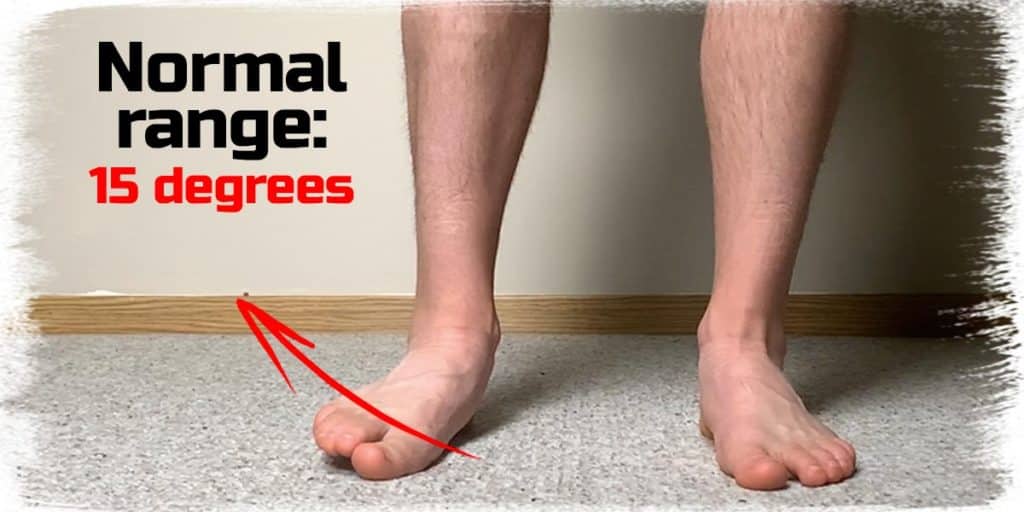
Ankle eversion is the exact opposite movement of ankle inversion; the ankle scoops in an outwards motion so as to have the sole of the foot point away from the midline of the body.
The ankle naturally has much less range of motion to produce eversion, which is due to how the joints around the foot and lower leg are constructed. For this reason, an eversion ankle sprain is far less common than a traditional inversion ankle sprain, though they still do occur.
Ankle movement 3: Plantarflexion
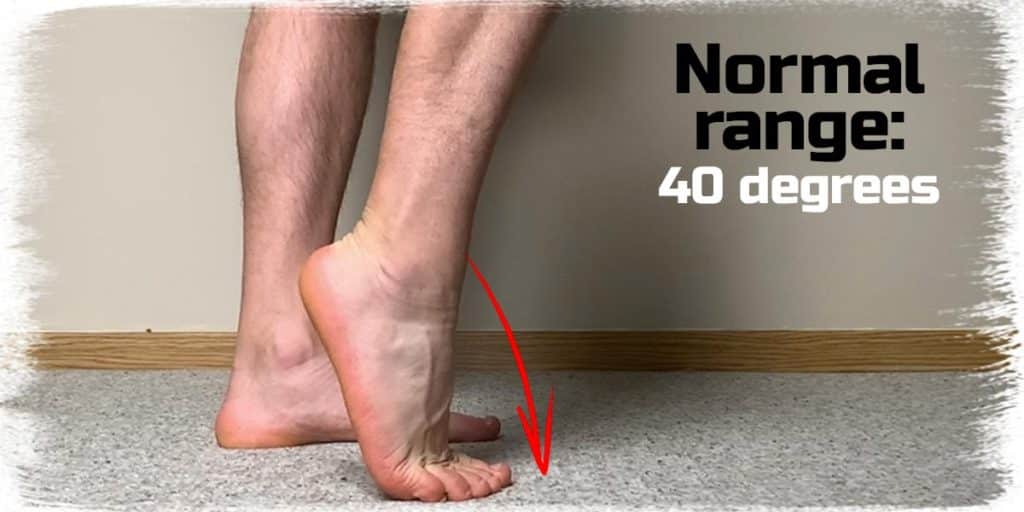
Plantarflexion is the movement your ankle makes whenever you press your foot down on a gas pedal in a vehicle or when walking on the balls of your feet. It’s the movement with the most extensive range of motion within the ankle when compared to its other movements.
Ankle movement 4: Dorsiflexion
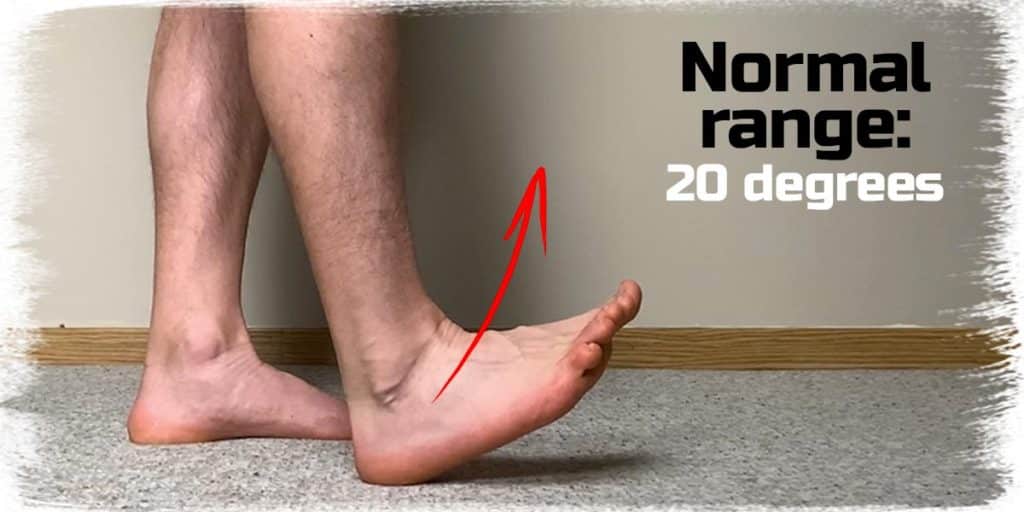
Dorsiflexion is the exact opposite movement of plantarflexion. If you were to walk around on your heels while keeping the rest of your foot off of the ground, you would be maintaining dorsiflexion in order to do so.
Related article: How to K-tape Your Achilles Tendon All By Yourself: A Step-by-step Guide
Exercise 1: Resisted eversion with yellow mini-band
This is an outstanding exercise for strengthening your ankles, especially if you have a history of rolling them or generalized ankle weakness.
You will need a light-to-medium resistance band of some kind. Mini-bands work great for this (along with dozens of other exercises). Don’t worry if you don’t have any; they are absolutely dirt cheap and can often be purchased in a pack.
You can also tie some Theraband in a loop and use it as a mini-band. Either way is totally fine (I have done both ways many times).
If you need to pick up a dirt-cheap pack of mini-bands, I’d try these resistance mini-bands from Amazon. Please note: This is an affiliate link and I use all commissions to offset the costs I incur for running this site.
To perform the exercise:
- Place the mini band around the forefoot of each foot.
- Ensure there is tension on the band before you begin the movement
- Scoop your ankle upwards and outwards (you should feel the bands’ resistance increase).
- Slowly return to the starting position and repeat.
- Try to keep as much of the movement confined to the ankle as possible. (Your shinbone should stay relatively motionless).
Key muscles strengthened with this exercise:
Fun fact: The fibularis muscles are also known as the “peroneal” muscles. In recent years the name “fibularis” has begun replacing the name “peroneus”
Exercise 2: Inversion strengthening with a Pilates ball
This exercise is absolutely brilliant for targeting some of the key muscles on the inside of the ankle that greatly help to produce ankle inversion.
These muscles need to be strong and healthy as they have critical roles in helping to maintain arch support of the foot and proper strength and control of the toes with specific movements (primarily flexion).
To perform the exercise:
- Grab a soft, medium-sized ball (a children’s toy ball works great)
- Place the ball just above your inside ankle bones and squeeze it with your legs.
- While maintaining the squeeze, slowly lift your heels up off the gourd as high as you can. Your ankles should naturally invert as you do this.
- Slowly return to the starting position and repeat.
If done correctly, you should feel a sense of effort in the muscles/tendons behind your outside ankle bone, behind the back of your lower leg and even a bit in the bottom of your foot.
Key muscles strengthened with this exercise:
Exercise 3: Self-resisted dorsiflexion
Strengthening your ankle dorsiflexion while seated can be a bit tricky to do if you are trying to do it with specific exercise equipment.
Thankfully, there’s a relatively easy way to start building your dorsiflexion strength without specific equipment – you just need to use your other leg! With this exercise, you will be using your opposite foot to resist the dorsiflexion of the ankle you’re trying to strengthen.
To perform the exercise:
- Place your non-strengthening foot on top of the ankle you’re strengthening.
- Pull the ankle you’re strengthening directly upwards but use your other leg to prevent it from moving (this is known as an isometric contraction.
- Hold the contraction for ten seconds. Take a short break and repeat for as many repetitions as needed.
Pro tip: You can perform this exercise in different ranges of motion to strengthen your dorsiflexion muscles in these different positions. Try performing some repetitions in full dorsiflexion, some in a neutral position and others from a full plantarflexion position.
Primary muscle strengthened with this exercise:
Final thoughts
Sometimes it’s nice to do things while sitting down, be it out of necessity or just general preference.
If you’re in the early-to-mid (or later) stages of ankle rehabilitation following an injury or are looking for some great seated exercises that can help prevent ankle injuries, the movements covered within this article may be a great option.
As always, if you’re recovering from an injury or aren’t sure if these exercises may be appropriate for you, make sure you speak with a licensed healthcare professional first before giving them a try.

Hi! I’m Jim Wittstrom, PT, DPT, CSCS, Pn1.
I am a physical therapist who is passionate about all things pertaining to strength & conditioning, human movement, injury prevention and rehabilitation. I created StrengthResurgence.com in order to help others become stronger and healthier. I also love helping aspiring students and therapists fulfill their dreams of becoming successful in school and within their clinical PT practice. Thanks for checking out my site!

